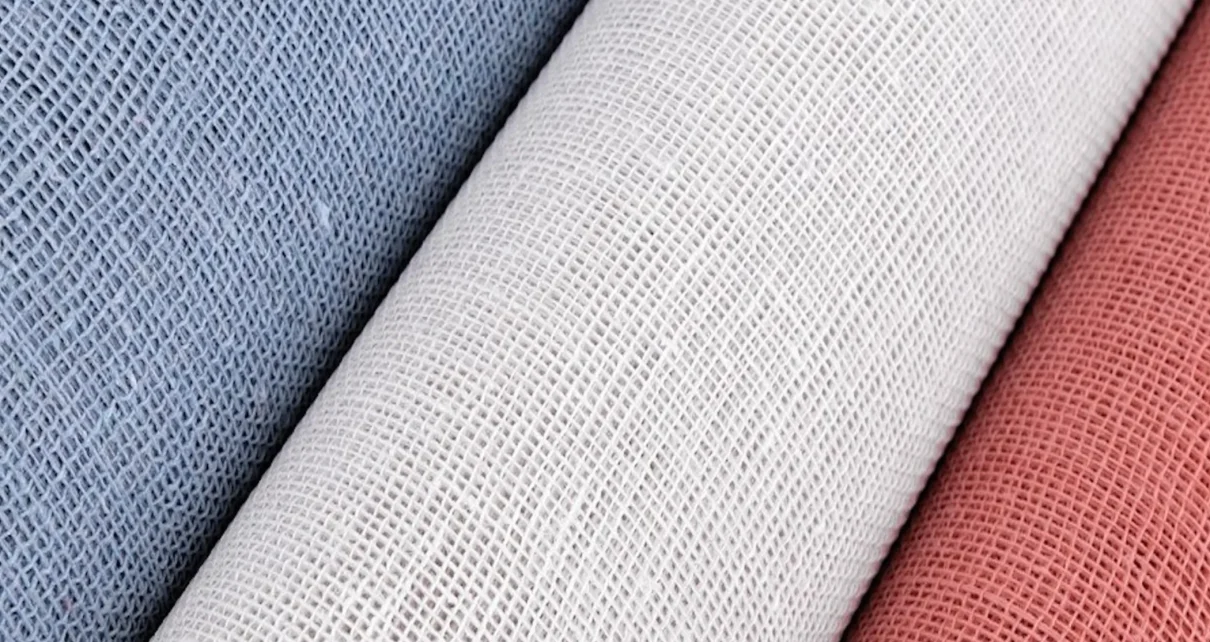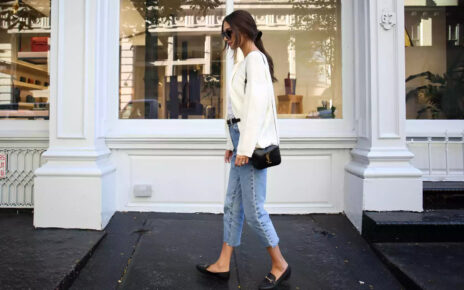The staple of cotton is the world of textiles, renowned for its breathability, comfort and adaptability. From crisp dress shirts, to soft bed sheets, cotton comes in many forms and fulfills various requirements. However, not all fabrics made of cotton are made to be the same. Each has its own strengths. Knowing which to choose will make a huge difference in terms of quality and satisfaction.
This guide will break down the most popular kinds of cotton fabric. It explains what makes them different and offers practical advice for choosing the most appropriate one. Also, you’ll get detailed advice on how to take care of your cotton clothing, to ensure they last longer.
What Is Cotton Fabric and Why Is It So Versatile
The natural fiber of cotton is made from the soft and bristles of cotton plants. The fibers are spun into thread or yarn before being knitted or woven into fabrics. The main benefit for cotton lies in its breathable, soft nature. It is able to absorb moisture, it feels soft against your skin, and is a breeze to work with during the process of manufacturing.
It’s also tough, it is easy to clean and retains color beautifully. These attributes make it the preferred fabric in everything from the everyday T-shirts all the way to high-thread count bedding. With so many possibilities it’s no wonder cotton is still a popular choice in the homes and wardrobes of the world.
Where Cotton Comes From A Look at Its Roots
Cotton has an extensive and rich history. The evidence suggests that humans began using cotton as early to the year 5000 BC in both India in ancient India and Mexico. In time, different regions began cultivating their own varieties, each one adapted to local climate and requirements.
In the Industrial Revolution, spinning and weaving cotton on a massive scale revolutionized the global textile industry. With improved plantation and harvesting techniques, as well as processing methods, cotton fabrics were made cheap and readily available. Today cotton farming and production help support industries and economies all over the world.
Understanding the Main Types of Cotton Fabrics
The quality of cotton you buy isn’t exactly the same. There’s plenty of options in the fabric stores or while reading product labels. Each kind of fabric is unique and has its own characteristics to a specific use.
Pima Cotton
Characteristics:
Pima cotton is renowned for its long fibers which result in a silkier, stronger, more durable and shiny material than normal cotton. It is soft and does not pill, and remains bright after several washes.
Best Uses:
You’ll find Pima cotton on high-end t-shirts, dress shirts, underwear, as well as luxurious sheets. It’s a great choice for casual wear that requires comfort and durability. Skin-sensitive people tend to prefer Pima cotton due to its soft, silky feeling.
Egyptian Cotton
Characteristics:
Egyptian cotton also has fine, long fibers that are harvested from cotton plants that grow on the Nile River. It’s comparable in quality to Pima cotton in terms of strength and softness however, Egyptian cotton can have an even finer texture due to the careful harvesting done by hand.
Best Uses:
It is a popular choice for the top bedding and towels available, Egyptian cotton delivers smooth soft sheets that have a sharp, crisp feel. You can also find it in top-quality robes and shirts. If you’re looking for clothes that keep cool during summer, and warm during cold winter days, Egyptian cotton is a solid choice.
Upland Cotton
Characteristics:
Upland cotton happens to be the largest and most extensively produced cotton variety across the United States and accounts for around 90 percent of the world’s production. It is made up of shorter fibers making it thinner in comparison to Pima and Egyptian varieties. It is durable and cost-effective.
Best Uses:
The majority of everyday staples made from cotton are made of Upland cotton. Think towels, jeans, socks, t-shirts and bedding for casual use. It’s an ideal selection for items that receive frequent wear and wash regularly.
Organic Cotton
Characteristics:
Organic cotton is grown without the use of synthetic pesticides, fertilizers as well as genetically engineered seeds. The farming process requires less water and contributes to healthier ecosystems and soils. Organic cotton has been processed according to high standards, and is free of harmful chemicals.
Best Uses:
Organic cotton can be found in bedding, clothing towels, baby items. Many environmentally conscious shoppers opt for it due to its low environmental impact as well as its skin-friendly properties. Certain organic cotton products are some more upfront however, many find the benefits worth it.
Cotton Blends
Characteristics:
Cotton blends combine natural cotton fibers and other materials like spandex, polyester or rayon. Combining cotton with natural or synthetic fibers can enhance certain properties such as wrinkle resistance, stretch or moisture-wicking.
Common Blends and Their Uses:
- Cotton-Polyester: The ideal option for uniforms, shirts that are easy to clean sheets, and uniforms. It is resistant to wrinkles and shrinkage.
- Cotton-Spandex: For leggings and activewear This blend retains the softness of cotton, while adding stretch.
- Cotton-Linen: The perfect summer outfit, giving you lightweight, cool clothing and pants that are breathable even in the hottest temperatures.
Selecting the best blend is contingent on the characteristics that you value most for example, breathing, ease of use or stretch.
How to Choose the Right Cotton Fabric
Selecting the best cotton fabric isn’t all about cost or brand. Different climates and projects require different approaches. Consider these things before purchasing:
Purpose
- Clothing: If you’re looking for soft, breathable tees, choose Pima or Upland. For formal attire, Egyptian or Pima cotton improves quality and style.
- Bedding and Towels: Egyptian as well as Pima cotton gives towels and sheets that soft, smooth final. Upland is a great choice for everyday sets that are durable.
- Baby Clothes and Sensitive Skin: Select Pima as well as organic cotton which are soft and less prone to irritation.
- Sports and Leisure: Blends of cotton-spandex work well to create comfortable, flexible activewear.
Climate
- Hot, Humid Regions: The light weight cotton or cotton-linen blends let you breathe and help sweat absorption.
- Cooler Weather: High-thread-count or heavier cotton weaves and Egyptian cotton will keep you warm without becoming too hot.
- Travel: If wrinkle resistance is important you should look for blends of cotton and polyester and treated cotton textiles.
Personal Preferences
Some prefer the feel of cool, crisp percale cotton. Others prefer the silky feel of silk sateen. Think about how a garment feels on your skin, the amount of maintenance you’d like to spend on, and the budget you have set for.
Caring for Your Cotton Fabrics
To keep your cotton clothing and linens looking great, a little extra care is well worth it. Here are the best methods for cleaning and maintaining cotton fabric:
Washing
- Sort them by color. Wash colors, whites, and darks in a separate manner to avoid fade or transfer of color.
- Use warm or cold water to limit shrinking and loss of color.
- Select a gentle soap specially for delicate cottons or organic fabrics.
- Flip clothes over to preserve colors and prints.
Drying
- If you can, dry your cotton fabric with air to preserve the strength of the fiber and avoid shrinkage.
- Make use of your dryer’s lowest temperature setting whenever you want to dry it.
- Take off clothes when they are slightly damp to minimize wrinkles.
Ironing and Storing
- Iron cotton clothes while they are damp to get the optimal results. Select the setting that says “cotton” on your iron.
- Hang clothes and shirts to prevent wrinkles. Fold large items such as towels and jeans, and then store them in a dry, cool location.
- Do not use plastic storage containers to store your items for a long period of time. Cotton is a breather.
Cotton Fabrics The Everyday Essential
Cotton fabric has been through the ages appearing in everything from old fabrics to the latest essentials. Their softness, durability and wide range of options makes cotton the perfect option for any budget and requirement.
When you next shop for bedding, clothing or a fabric for your project, make sure you read the tag and consider which type of cotton is best suited to your requirements. Spending a bit more on cotton is rewarded with products that feel better and look better, as well as last longer.
Do you know which fabric to choose in your next order? Remember these guidelines so that you can pick the perfect fabric each time.
Sustainable fabrics are environmentally friendly textiles designed to minimize ecological impact through ethical sourcing, low resource consumption, and biodegradability. Among the most sustainable options are organic cotton fabric, which is cultivated without toxic chemicals and uses less water, and linen fabric, derived from the flax plant, which requires minimal inputs and is completely biodegradable. Other eco-conscious choices include hemp, TENCEL™, and Cupro (Bemberg)—all produced from renewable materials using responsible and often closed-loop manufacturing processes.
Our wide selection of custom printed, ready mill-dyed, and yarn-dyed fabrics—ideal for bringing your next collection to life. For tailored support or any queries, feel free to contact us at hello@fabriclore.com. With Fabriclore, enjoy a smooth, reliable, and budget-friendly fabric sourcing experience.





